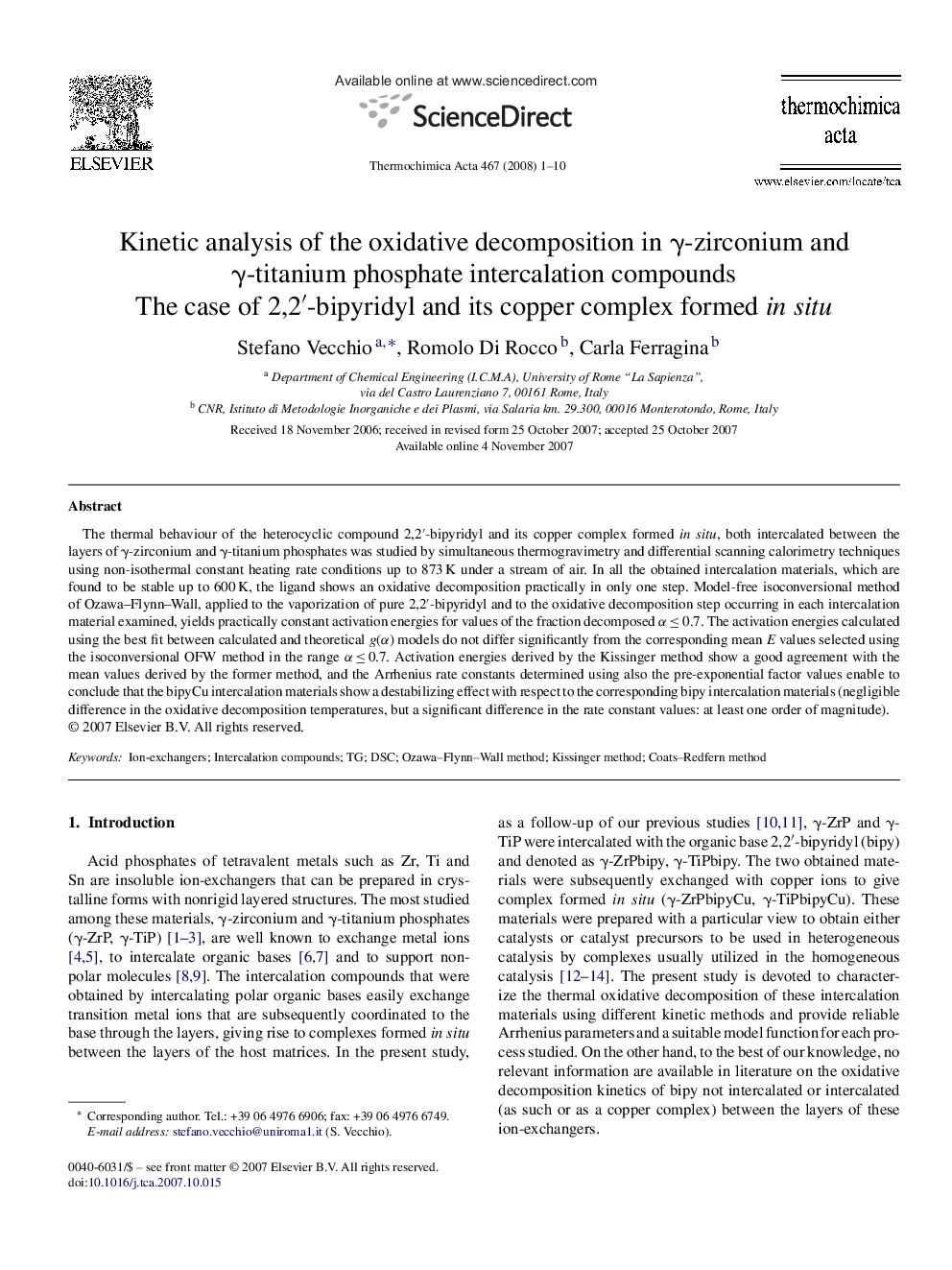| Article ID | Journal | Published Year | Pages | File Type |
|---|---|---|---|---|
| 675355 | Thermochimica Acta | 2008 | 10 Pages |
The thermal behaviour of the heterocyclic compound 2,2′-bipyridyl and its copper complex formed in situ, both intercalated between the layers of γ-zirconium and γ-titanium phosphates was studied by simultaneous thermogravimetry and differential scanning calorimetry techniques using non-isothermal constant heating rate conditions up to 873 K under a stream of air. In all the obtained intercalation materials, which are found to be stable up to 600 K, the ligand shows an oxidative decomposition practically in only one step. Model-free isoconversional method of Ozawa–Flynn–Wall, applied to the vaporization of pure 2,2′-bipyridyl and to the oxidative decomposition step occurring in each intercalation material examined, yields practically constant activation energies for values of the fraction decomposed α ≤ 0.7. The activation energies calculated using the best fit between calculated and theoretical g(α) models do not differ significantly from the corresponding mean E values selected using the isoconversional OFW method in the range α ≤ 0.7. Activation energies derived by the Kissinger method show a good agreement with the mean values derived by the former method, and the Arrhenius rate constants determined using also the pre-exponential factor values enable to conclude that the bipyCu intercalation materials show a destabilizing effect with respect to the corresponding bipy intercalation materials (negligible difference in the oxidative decomposition temperatures, but a significant difference in the rate constant values: at least one order of magnitude).
